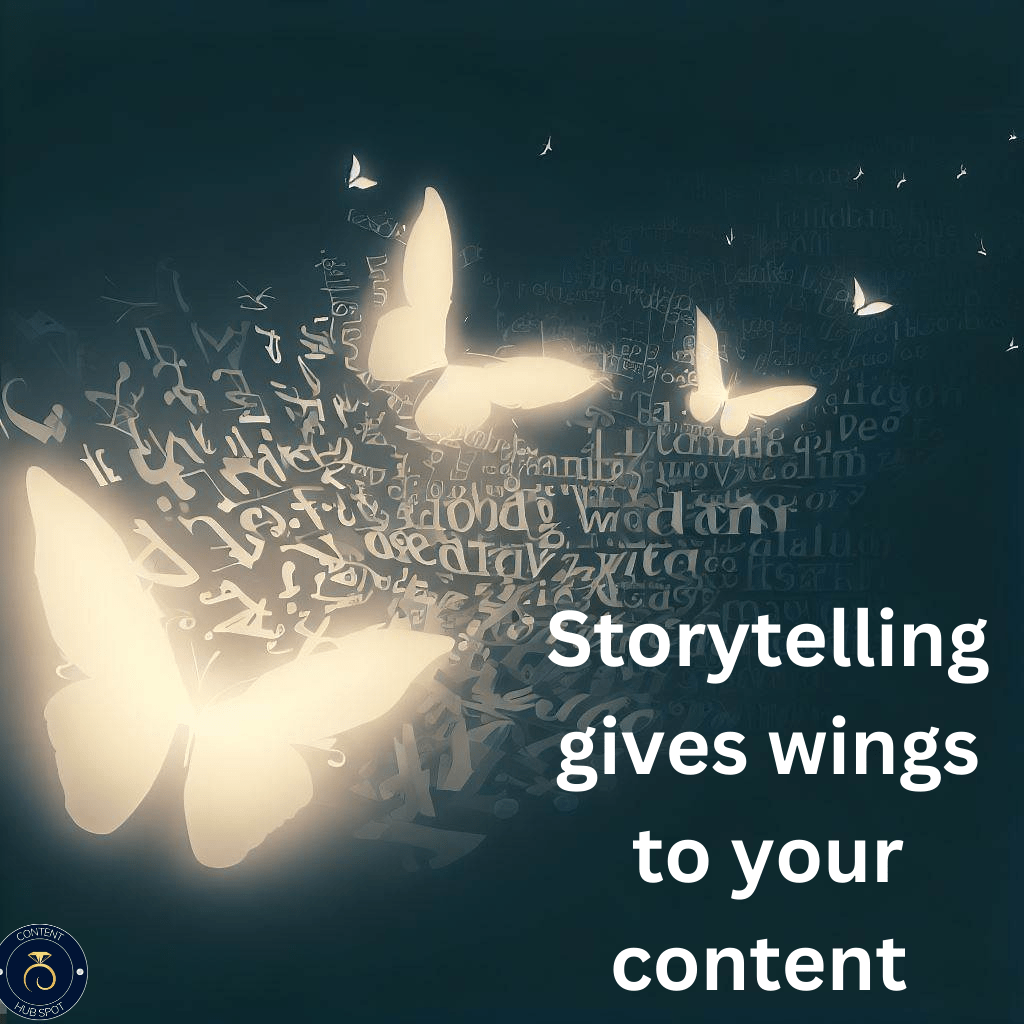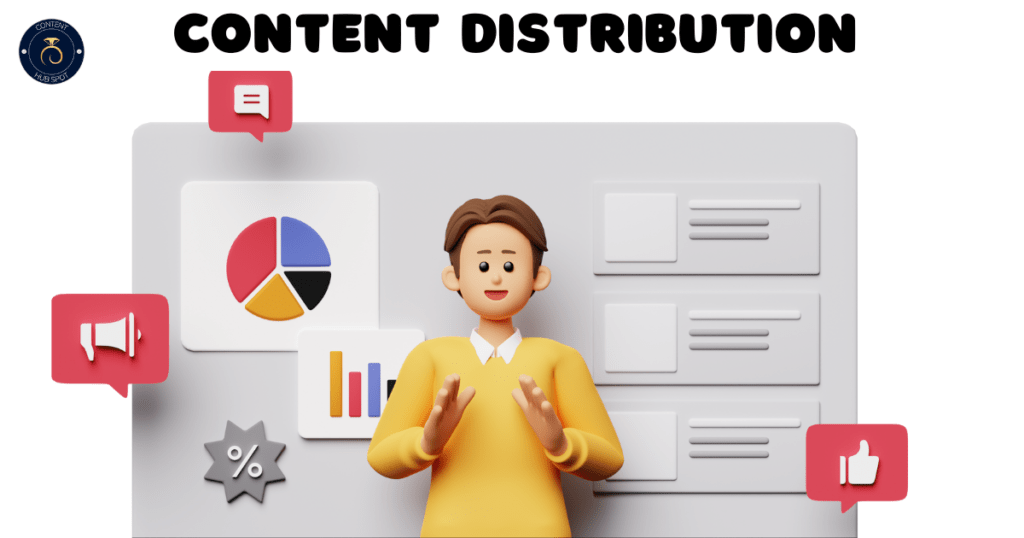In today’s fast-paced digital world, creating content that truly engages and resonates is a vital skill. Crafting connection is your guide to mastering this art. It’s more than just words on a screen – it’s a dynamic bridge between creators and audiences. This journey explores crafting captivating content that informs, enchants, and leaves a lasting impact. Whether you’re a writer, marketer, or anyone who values effective communication, learn the secrets of impactful storytelling, emotional triggers, tailored messaging and also know about content creator job, content creator skills. Uncover the alchemy of creating content that endures, turning readers into believers. Welcome to a world where words become connections that matter.
Unleashing the Power of Connection

The Essence of Connection
So, the emotional bond between content (like articles, videos, etc.) and the people who see it is like a special connection. When content makes people feel things like happiness, understanding, or even nostalgia, it creates a strong link.
Think of it like this: content that talks about things that matter to the audience and tells stories that they can relate to gets their attention and touches their hearts.
When content is real and true, it helps build trust and a strong connection. And if it’s designed nicely with colors and pictures that look good, that also adds to the feelings it brings out.
Also, when content lets people take part – like answering questions or leaving comments – it makes them feel involved. And when the content keeps being interesting and matches what people expect, it makes the connection even stronger over time.
So, the main thing is that content becomes really special when it makes people feel something and when it’s about things they care about. This makes people want to keep coming back for more and even tell their friends about it!
Identifying Your Target Audience

Let’s talk about how to figure out who your target audience is and how to engage with them better!
Think of it like this: before you start creating content, it’s super important to know who you’re talking to. This helps you make content that they’ll really like and connect with.
To do this, you create something called “audience personas.” These are like fictional characters that represent different types of people who might be interested in your content. You give each persona a name, some details about their life, what they like, what problems they have, and what they’re looking for.
When you know your audience personas, you can create content that speaks directly to them. Like, if you’re making content for busy moms, you’d want to talk about things that matter to them – like managing time or finding quick meal recipes.
Knowing your audience helps you use the right language, show the right images, and even choose the best places to share your content. It’s like having a cheat sheet to make your content super appealing to the people you want to reach.
So, it’s all about understanding your audience’s interests and needs, and then tailoring your content to match. This way, you’ll grab their attention and make them feel like you’re speaking just to them!
Mapping Audience Needs

Let’s dive into how you can connect your content to what your audience really needs and wants.
Think about it this way: your audience is looking for solutions to their problems or things that make their lives better. Your content can be like a helpful guide that shows them the way.
To do this, you need to understand what issues they’re facing and what they’re hoping to achieve. This involves doing some research, like looking at what questions they’re asking online, what topics they’re interested in, and what challenges they’re talking about.
Once you know their needs and desires, you can create content that addresses these points. For instance, if your audience is into fitness and struggling with staying motivated, you could make content about tips to stay on track or stories of people who successfully overcame similar challenges.
Your content becomes like a solution provider. When people see that your content is helping them solve their problems or get closer to their goals, they’ll be more likely to engage with it, share it, and remember your brand.
Remember, it’s all about being genuinely helpful and giving value to your audience. When they feel like your content understands their concerns and offers solutions, they’ll be more likely to trust you and become loyal followers.
So, focus on figuring out what your audience really needs and wants, and then create content that directly connects to those things. This way, you’re not just making noise, you’re actually making a positive impact on their lives!
Crafting a Unique Voice
Let’s talk about giving your content a unique personality to make it relatable and memorable.
Think about it like this: just like people have their own unique ways of talking and expressing themselves, your content can have its own special voice too. This makes it stand out and feel more like a conversation with a friend rather than just information.
To do this, you want to figure out the vibe you want your content to have. Are you aiming for friendly, professional, casual, or maybe even a bit quirky? This sets the tone for how you’ll talk to your audience.
When you’ve got that tone down, you can start infusing your content with that personality. Use words, phrases, and even humor that match the style you’ve chosen. Imagine if your content was a person – what kind of person would it be? That’s the personality you’re aiming for.
This uniqueness helps your audience connect with your content better. They’ll feel like they’re interacting with a real person or a brand that gets them. It’s like finding a friend who speaks your language!
But remember, being consistent is key. If your content is funny and casual one day, and then super serious the next, it might confuse your audience. So, stick to your chosen personality across all your content.
Long story short, give your content a distinct personality that matches your brand and resonates with your audience. When your content feels like it’s coming from a relatable friend, people will be more likely to enjoy it, engage with it, and remember it.
Weaving the Narrative: Storytelling for Impact

Let’s talk about how storytelling can make your content more captivating and impactful!
Think of it like this: people love stories. They’ve been telling and listening to stories for centuries. Stories have this magical way of grabbing our attention and making us feel connected.
When you use storytelling in your content, you’re not just giving out information – you’re creating an experience. You’re taking your audience on a journey, and that makes your content way more interesting and memorable.
Instead of just saying, “Here are some tips for cooking,” you could start with a personal story about a cooking disaster you had, and then lead into the tips. This makes your content relatable and engaging. Your audience will pay more attention because they want to know how your story ends.
And stories stick in our minds. We remember stories better than facts or statistics. So, if you’re sharing information, wrap it up in a story. For instance, if you’re writing about a new product, tell the story of how it was developed and how it solved a problem.
Stories also create an emotional connection. When people feel something while reading or listening, they’re more likely to care about what you’re saying. You can use emotions like joy, empathy, or even a bit of suspense to keep your audience hooked.
So, remember, when you’re creating content, think about how you can weave in stories. It could be personal experiences, customer success stories, or even fictional scenarios that illustrate your point. This storytelling advantage will make your content more captivating and leave a lasting impact on your audience.
Structuring Your Narrative
Let’s talk about how to structure your content like a story to keep your audience engaged from start to finish!
Think of it like this: just like a good book or movie, your content should have a clear beginning, middle, and end. This structure helps your audience follow along and stay interested.
Beginning: Start with a strong hook. This could be a surprising fact, a thought-provoking question, or a relatable story. The goal is to grab your audience’s attention right away and make them want to keep reading or listening.
Middle: This is where the main content of your story goes. Break it down into smaller sections or steps. For example, if you’re talking about travel tips, each tip could be a separate section. Make sure these sections flow logically so your audience can easily follow the progression.
End: Finish with a satisfying conclusion. Sum up the main points you’ve covered and wrap up the story you’ve been telling. You could end with a call to action, like asking your audience to share their thoughts, try out what they’ve learned, or explore more related content.
Now, here’s the trick: weave your content around a central theme or message. This gives your content a purpose and keeps your audience engaged. For instance, if your theme is “overcoming challenges,” each section of your content could focus on a different challenge and how to conquer it.
Remember, storytelling isn’t just about words. Visuals can help too. Use images, videos, or even diagrams to illustrate your points and break up the text.
And always keep your audience in mind. What do they need to know? How can you make it interesting and valuable for them? If you were in their shoes, what would keep you engaged?
So, when you’re creating content, think about building a narrative with a clear beginning, middle, and end. This structure will make your content easier to follow, more engaging, and ultimately more memorable for your audience.
Emotional Resonance
Let’s talk about how you can use stories to evoke emotions and create strong connections with your audience.
Think of it like this: emotions are like the secret ingredient that makes stories powerful. When you tell stories that touch people’s feelings, you’re creating a bond that goes beyond just words.
Start by choosing the emotion you want to evoke. It could be happiness, empathy, nostalgia, or even a mix of emotions. Then, craft your story around that emotion. For example, if you want to evoke empathy, tell a story about someone overcoming a challenge – your audience will connect with the struggle and root for the person’s success.
Personal stories often work wonders. When you share your own experiences, vulnerabilities, and triumphs, your audience can relate to you on a human level. This builds trust and a deeper connection.
But here’s the key: show, don’t just tell. Instead of saying, “This made me happy,” describe the situation, the sights, the sounds, and the feelings that made you happy. Let your audience experience the emotion through your words.
Also, surprise and authenticity can trigger strong emotions. If your story takes an unexpected turn or if you share something real and unfiltered, your audience will be more engaged and connected.
Remember, your goal is to make your audience feel something. When they feel an emotion while reading or listening to your content, they’ll remember it better and associate that emotion with your brand.
So, when you’re creating content, think about the emotions you want to evoke and how your story can bring those emotions to life. This emotional resonance will create a deeper bond between you and your audience.
Visual Appeal: Enhancing Engagement with Media

Let’s talk about using visuals like images, videos, and graphics to create a stronger connection with your audience.
Think of it like this: visuals are like the colorful paint that brings your content to life. They grab attention, make your content more engaging, and help convey your message in a way that words alone can’t.
Images are a great way to start. They can show what you’re talking about, whether it’s a product, a place, or an idea. For example, if you’re sharing a recipe, include mouth-watering photos of the finished dish. These images help your audience visualize what you’re describing.
Videos are even more dynamic. They allow you to tell stories, demonstrate processes, or even directly connect with your audience. You could make behind-the-scenes videos, tutorials, or even short clips that share quick tips. Videos are fantastic for building a personal connection because your audience can see and hear you.
Graphics, like infographics or charts, can simplify complex information. They’re great for breaking down data or explaining concepts visually. If you’re sharing statistics or step-by-step instructions, a well-designed graphic can make it much easier to understand.
Consistency in your visual style matters too. Use a similar color palette, fonts, and design elements across your visuals. This creates a cohesive look that helps your audience recognize your brand easily.
Remember, visuals should complement your content, not overpower it. They should add value and help your audience better understand your message. So, choose visuals that enhance your storytelling and make your content more relatable.
When you combine the power of words with compelling visuals, you create a more immersive experience for your audience. They’ll not only understand your message better, but they’ll also enjoy consuming your content more. So, go ahead and paint a vivid picture that resonates with your audience!
Design and Layout
Let’s delve into optimizing the design and layout of your content for a smooth and enjoyable reading experience.
Think of it like this: just like a well-organized room is inviting and comfortable, well-designed content is more appealing and easy to understand.
Clean and Clear: Start with a clean layout. Avoid clutter and make sure there’s enough white space around your text and images. This gives your content room to breathe and makes it less overwhelming.
Typography: Choose fonts that are easy to read. Stick to a maximum of two or three fonts throughout your content. Use font sizes and styles (like bold or italics) to highlight key points and headings.
Colors: Pick a consistent color scheme that matches your brand. Use colours that are easy on the eyes and create good contrast between the background and the text. This makes reading effortless.
Headings and Subheadings: Break your content into sections with clear headings and subheadings. This helps your audience scan through the content and find what they’re looking for quickly.
Bullet Points and Lists: Use bullet points or numbered lists to organize information that’s in a sequence or has multiple points. Lists are easier to digest than long paragraphs.
Visuals and Media: Integrate images, videos, and graphics thoughtfully. They should enhance your content, not distract from it. Make sure visuals are relevant to the text they accompany.
Mobile-Friendly: Ensure your design is responsive, meaning it looks good and is easy to read on both desktop and mobile devices. Many people access content on their phones, so this is crucial.
Consistency: Maintain a consistent design throughout your content. If you’re using a specific style for headings or quotes, stick with it. Consistency helps establish a professional and organized look.
Hierarchy: Use a clear hierarchy in your layout. Important information should stand out, whether it’s through larger fonts, bold text, or strategic placement.
Whitespace: Don’t be afraid of empty space. Whitespace, or negative space, helps reduce visual clutter and makes the content easier to read and navigate.
Remember, the design and layout should enhance the content, not overshadow it. Your goal is to make it as easy as possible for your audience to consume and understand your message. When your content looks appealing and is well-organized, it encourages your audience to stay engaged and keep coming back for more.
Authenticity Matters: Building Trust and Credibility
Transparency and Authenticity
Let’s talk about the importance of being authentic and transparent in your content to build trust with your audience.
Think of it like this: people appreciate honesty. When you’re open, real, and upfront in your content, it creates a strong sense of trust between you and your audience.
Be Yourself: Authenticity starts with being yourself. Share your real thoughts, experiences, and even challenges. Your audience will connect with your humanity and find you more relatable.
Share the Why: Explain why you’re sharing certain information or taking a particular stance. When your audience understands your motivations, they’re more likely to see your content as genuine rather than just promotional.
Acknowledge Imperfections: It’s okay to admit when things don’t go perfectly. If you made a mistake, own up to it and explain how you’re addressing it. This honesty shows your integrity.
Behind the Scenes: Give your audience a peek behind the curtain. Share how things work in your business or how your content is created. This transparency makes your audience feel like insiders.
Address Concerns: If your audience has concerns or questions, address them openly. This shows that you care about their opinions and are willing to engage in a meaningful conversation.
Avoid Over-Promotion: While promoting your products or services is important, don’t make every piece of content about selling. Offer valuable information without always expecting something in return.
Storytelling: Use personal stories to illustrate your points. When you share your experiences, it creates an emotional connection and humanizes your brand.
Admit When You Don’t Know: If you don’t have all the answers, it’s okay to say so. Your honesty will be appreciated, and you can offer to find more information or resources.
Remember, authenticity and transparency are essential for building long-term relationships with your audience. When people feel that you’re being genuine and that you have their best interests at heart, they’re more likely to trust you and become loyal followers. So, embrace your authenticity and let it shine through in your content!
Credible Sourcing
Let’s talk about the importance of using credible sources to support the claims you make in your content.
Think of it like this: just as a building needs a strong foundation, your content needs reliable sources to stand on. When you back up your claims with credible information, you show your audience that you’re trustworthy and knowledgeable.
Choose Reputable Sources: Use sources that are known for their credibility and expertise. These could be reputable websites, academic journals, established experts, or official publications.
Fact-Check: Always fact-check the information you’re using. Make sure the sources are accurate and up-to-date. Misinformation can damage your reputation and mislead your audience.
Diverse Sources: If possible, use multiple sources to support your claims. This adds weight to your argument and shows that your information is well-researched.
Provide Citations: When you mention statistics, studies, or expert opinions, provide proper citations. This allows your audience to verify the information themselves if they want to.
Balance Different Viewpoints: If you’re discussing a topic with different perspectives, present a balanced view by citing sources that represent various viewpoints.
Avoid Biased Sources: Stay away from sources that have a clear bias or agenda. Your goal is to provide objective and accurate information to your audience.
Original Research: If you have conducted your own research, share the methodology and results transparently. This adds credibility to your content.
Stay Current: Ensure the sources you’re using are recent and relevant. Outdated information might not accurately represent the current state of a topic.
Remember, using credible sources not only adds credibility to your content but also enhances your authority in your field. Your audience will appreciate your efforts to provide accurate and well-researched information. By building trust through reliable sourcing, you’re more likely to retain your audience’s interest and respect.
Conversations, Not Monologues: Fostering Interaction
Engaging with Your Audience
Let’s discuss how to create content that encourages discussions and interactions with your audience.
Think of it like this: content isn’t just a one-way street. It’s a conversation. When you create content that sparks engagement, you’re inviting your audience to be part of that conversation.
Ask Questions: Pose thought-provoking questions related to your content. Encourage your audience to share their opinions, experiences, or ideas in the comments.
Call to Action: Include clear calls to action in your content. Ask your audience to share their thoughts, try out your suggestions, or participate in a challenge.
Respond Promptly: When your audience engages with your content, respond to their comments and messages promptly. This shows that you value their input and are actively listening.
Polls and Surveys: Use interactive elements like polls and surveys to involve your audience. This makes them feel like their opinions matter.
User-Generated Content: Encourage your audience to create their own content related to your topic. You could feature their content on your platform, which boosts engagement and shows appreciation.
Tell Personal Stories: Share personal experiences that relate to your content. This opens the door for your audience to share their own stories in response.
Live Sessions: Host live Q&A sessions, webinars, or discussions where your audience can participate in real-time. Live sessions create a direct and immediate connection.
Share User Success Stories: Highlight stories of how your audience members have benefited from your advice or products. This not only showcases the value you provide but also encourages others to share their success stories.
Be Open to Feedback: Welcome feedback, both positive and constructive. This shows that you’re open to improvement and value your audience’s perspective.
Remember, engagement isn’t just about getting likes and comments. It’s about building a community around your content where people feel comfortable sharing their thoughts and experiences. When you create content that invites participation, you’re fostering a deeper connection with your audience, which can lead to increased loyalty and long-term relationships.
Responding and Listening
Let’s talk about the importance of actively participating in conversations around your content and how to respond and listen effectively.
Think of it like this: when your audience engages with your content, it’s a chance to have meaningful conversations and build stronger connections.
Prompt Responses: When people comment on your content, try to respond in a timely manner. This shows that you’re engaged and interested in their thoughts.
Personalise Responses: Don’t use generic responses. Tailor your replies to each individual comment to show that you’re truly engaged with what they’re saying.
Express Gratitude: Thank people for their comments and contributions. A simple “thank you” goes a long way in making your audience feel appreciated.
Ask Follow-up Questions: Keep the conversation going by asking follow-up questions. This encourages deeper engagement and helps you understand your audience better.
Address Concerns: If someone raises a concern or asks a question, address it openly and honestly. This demonstrates your commitment to your audience’s needs.
Stay Positive: Even if someone offers criticism, respond in a positive and respectful manner. Negative interactions can be turned into constructive discussions.
Encourage Interaction: Use your responses to encourage more interaction. For instance, you can say, “What are your thoughts on this?” or “Have you experienced something similar?”
Listen Actively: Pay attention to the comments and feedback you receive. This helps you understand your audience’s preferences, concerns, and interests.
Stay Humble: It’s okay not to have all the answers. If you don’t know something, admit it and offer to find more information. This honesty builds trust.
Stay Consistent: Consistently engage with your audience. Regular interactions show that you’re committed to building a relationship beyond just one piece of content.
By actively participating in conversations, you show that you value your audience’s input and want to create a two-way connection. This engagement can lead to a loyal community that trusts and supports your brand. Remember, listening and responding go hand in hand in building meaningful relationships with your audience.
SEO and Beyond: Amplifying Reach and Impact

Understanding SEO’s Role
let’s talk about how you can use SEO (Search Engine Optimization) strategies to make your content more visible and accessible to your target audience.
Think of it like this: SEO is like a map that guides people to your content. When you optimize your content for search engines, you increase the chances of your audience finding your content when they’re searching for relevant topics.
Keywords: Research and include relevant keywords in your content. These are the words or phrases people use to search for information online. But use them naturally – don’t overstuff.
Quality Content: Search engines love high-quality content that answers people’s questions or provides valuable information. Create content that genuinely helps your audience.
Meta Tags: Craft compelling meta titles and descriptions. These show up in search results and influence whether people click on your content.
Internal and External Links: Include links to other relevant pages within your website (internal links) and to authoritative sources outside your website (external links). This enhances the user experience and credibility.
Mobile-Friendly: Ensure your website and content are optimized for mobile devices. Search engines consider mobile-friendliness when ranking content.
Page Load Speed: Slow-loading pages can hurt your SEO. Optimize images and code to improve your page load speed.
Headers and Subheadings: Use clear and descriptive headings (H1, H2, H3, etc.). These not only help readers navigate your content but also help search engines understand its structure.
Alt Text for Images: Add descriptive alt text to images. This helps search engines understand what the images are about.
Freshness: Keep your content updated and relevant. Search engines often prioritize newer content, especially for topics that require up-to-date information.
Social Sharing: When your content is shared on social media, it can increase its visibility. Include social sharing buttons on your content.
Analytics: Use tools like Google Analytics to track your content’s performance. This helps you understand what’s working and what needs improvement.
Remember, the goal of SEO is to make your content easily discoverable by your target audience. By implementing SEO strategies effectively, you increase the likelihood of your content showing up in search results, which in turn can drive more organic traffic to your website. It’s about making your content not just great, but also easy to find!
Content promotion and distribution

Let’s talk about how to expand the reach of your content through effective promotion and distribution strategies.
Think of it like this: creating great content is just the first step. To make sure it reaches a wider audience, you need to actively promote and distribute it.
Social Media: Share your content on relevant social media platforms. Tailor your posts for each platform and use appropriate hashtags to increase visibility.
Email Marketing: Send out email newsletters to your subscribers. Include snippets or links to your content along with a compelling call to action.
Collaborations and Partnerships: Partner with influencers, other content creators, or businesses in your industry to cross-promote each other’s content. This helps you tap into each other’s audiences.
Guest Posting: Write guest posts for reputable websites and blogs in your niche. This not only exposes your content to a new audience but also builds backlinks to your website, which can improve your SEO.
Content Repurposing: Repurpose your content into different formats like videos, infographics, podcasts, or slideshows. This allows you to reach different audiences on various platforms.
Paid Advertising: Consider using paid advertising on platforms like Google Ads or social media. This can help you target specific audiences and increase visibility.
Engagement with Communities: Participate in online forums, discussion groups, and communities related to your industry. Share your content when it’s relevant to the conversation.
Social Sharing Buttons: Make it easy for your audience to share your content by including social sharing buttons on your website and within your content.
Collaborative Projects: Organize collaborative projects like webinars, online workshops, or challenges with other experts or creators. This can attract a broader audience.
Influencer Outreach: Reach out to influencers in your niche and ask if they’d be interested in sharing your content. Their endorsement can introduce your content to their followers.
Remember, promotion and distribution are essential to ensure that your content gets in front of the right people. A well-executed promotion strategy can significantly increase the visibility and impact of your content, ultimately driving more engagement, traffic, and conversions.
Data-Driven Refinement: Iterating for Connection
Analyzing Audience Response
Let’s discuss how you can use data insights to analyze your audience’s response to your content and make improvements.
Think of it like this: data is like a treasure trove of information that can guide you in creating content that truly resonates with your audience.
Website Analytics: Use tools like Google Analytics to track metrics like page views, bounce rate, time on page, and user demographics. This helps you understand how people are interacting with your content.
Social Media Insights: Platforms like Facebook, Instagram, and Twitter offer insights into engagement, reach, likes, shares, and more. This data helps you identify which types of content perform best on each platform.
Email Campaign Metrics: When you send out newsletters or emails, track metrics like open rates, click-through rates, and conversion rates. This shows you how effective your email content is.
Comments and Feedback: Pay attention to the comments, feedback, and questions you receive on your content. They can give you valuable insights into what your audience likes or needs more of.
A/B Testing: Experiment with different versions of your content. This could be variations in headlines, visuals, or calls to action. Analyze which version performs better.
Conversion Tracking: If you have specific goals like sign-ups or sales, track how your content contributes to those conversions. This helps you understand which content is driving real results.
Heatmaps: Heatmaps show you where users are clicking and scrolling on your website. This visual data can help you optimize your content layout for better engagement.
User Surveys: Conduct surveys to gather direct feedback from your audience. Ask them about their preferences, what they like about your content, and what they’d like to see more of.
Content Audits: Regularly review your past content to see which pieces have performed well and why. This can guide your future content strategy.
Benchmarking: Compare your content performance over time to see trends and patterns. This helps you identify what’s working consistently and what needs improvement.
By analyzing audience response, you gain valuable insights into what’s resonating with your audience and what isn’t. This information allows you to refine your content strategy, create more of what your audience loves, and continuously improve your engagement and impact. Remember, data-driven decisions lead to more effective content creation.
Adapting to Trends
Let’s talk about how to stay relevant by adapting to current industry trends in your content strategy.
Think of it like this: just as fashion trends change, so do trends in your industry. Adapting to these trends helps you stay fresh and engaging for your audience.
Stay Informed: Keep a close eye on what’s happening in your industry. Follow relevant news, blogs, social media accounts, and attend industry events or webinars.
Keyword Research: Use keyword research tools to identify trending topics and search terms related to your niche. Creating content around these keywords can boost your visibility.
Monitor Social Media: Watch out for hashtags and discussions that are gaining momentum on social media. Join the conversation and create content that adds value to these discussions.
Be Timely: If there’s a breaking news story or a current event that’s relevant to your industry, create content that provides insights or commentary.
Embrace New Formats: Stay open to new content formats that are gaining popularity, like video streaming, short-form content, or interactive content. Experiment with these formats to see what resonates with your audience.
Incorporate Influencer Insights: Follow influential figures in your industry. They often have their finger on the pulse of the latest trends. Sharing their insights can position you as up-to-date.
Audience Feedback: Pay attention to what your audience is asking for. If you notice recurring questions or requests, create content that addresses those needs.
Content Curation: Curate content from reputable sources and add your insights. This not only saves time but also positions you as a knowledgeable source of industry trends.
Adapt, Don’t Copy: While following trends is important, make sure your content maintains your unique voice and perspective. Adapt trends to fit your brand and audience.
Flexibility: Be ready to pivot your content plan if a new trend emerges. Sometimes being among the first to cover a trending topic can give you an advantage.
Remember, aligning your content strategy with current trends helps you demonstrate your expertise and relevance in your industry. By staying in tune with what’s happening, you position yourself as a valuable resource for your audience. It’s all about keeping your finger on the pulse of your niche and delivering content that’s both informative and timely.
Cultural Sensitivity
Let’s discuss the importance of cultural sensitivity in creating content that resonates with diverse audiences.
Think of it like this: the world is made up of many cultures and backgrounds, and your content should be respectful and inclusive of this diversity.
Educate Yourself: Take the time to learn about different cultures, traditions, and customs. This helps you avoid unintentional stereotypes or cultural misappropriation.
Language Considerations: Be aware of language nuances and idioms that might not translate well across cultures. Avoid using slang or phrases that might be unfamiliar to some audiences.
Visual Representation: Ensure your visuals and imagery are inclusive and representative of different ethnicities, genders, and backgrounds.
Cultural References: If you’re including cultural references, make sure you understand them fully and use them appropriately. Misusing or misinterpreting references can come across as insincere.
Avoid Stereotypes: Steer clear of stereotypes or assumptions about different cultures. Your content should be based on accurate and respectful representations.
Diverse Voices: Include diverse voices in your content creation process. This can mean collaborating with people from different backgrounds or perspectives.
Consultation: If you’re unsure about how a particular topic might be perceived in different cultures, consider seeking input from individuals who belong to those cultures.
Respect Traditions: If you’re addressing holidays, festivals, or traditions from various cultures, make sure you’re respectful and accurate in your representation.
Cultural Sensitivity in Language: Be aware of potentially sensitive or offensive language that might vary across cultures. Choose words carefully to ensure they are respectful and appropriate.
Feedback and Adaptation: Be open to feedback from your audience. If someone points out a cultural sensitivity issue, acknowledge it, learn from it, and adapt your approach.
Remember, the goal is to create content that everyone can relate to and connect with. Cultural sensitivity not only prevents misunderstandings but also shows that you respect and value your diverse audience. By understanding and respecting different cultural perspectives, you can create content that truly resonates and builds a sense of inclusivity.
Addressing Social Issues
Let’s discuss how to address social issues in your content to engage with a socially aware audience.
Think of it like this: your audience is likely to be interested in topics that reflect the current social landscape and issues that matter to them.
Research Thoroughly: Before discussing any social issue, research it thoroughly. Understand the various perspectives, historical context, and the latest developments.
Stay Neutral and Balanced: While it’s important to have a stance, ensure that your content presents a balanced view and respects different opinions. Encourage open and respectful discussions.
Add Value: Make sure your content adds value to the conversation. Offer insights, solutions, or ways for your audience to take action if they’re inspired by your content.
Respectful Language: Use language that’s respectful and sensitive to the experiences of those affected by the social issue. Avoid language that might be dismissive or offensive.
Empower and Educate: Use your platform to educate your audience about the issue. Share accurate information, statistics, and credible sources.
Show Empathy: Acknowledge the emotions and experiences of those impacted by the social issue. Show empathy in your content to create a compassionate and understanding environment.
Encourage Positive Change: Whenever possible, provide actionable steps that your audience can take to contribute positively to addressing the issue.
Use Personal Stories: Personal stories can make the social issue more relatable and emotionally resonant. Sharing personal experiences can foster a sense of connection.
Stay Consistent: If you choose to address social issues, do so consistently. Your audience will appreciate your commitment to these important discussions.
Open Dialogue: Encourage open dialogue in the comments section or on social media. Engage in meaningful conversations and respond to different viewpoints respectfully.
Remember, addressing social issues requires sensitivity, responsibility, and a commitment to positive change. By providing valuable insights and encouraging thoughtful discussions, you can create content that resonates deeply with your socially aware audience and positions you as a responsible and caring brand.
Conclusion:–
Let’s sum up the journey of mastering content creation for meaningful connections.
Think of it as weaving a tapestry of content that not only informs but also engages and connects with your audience on a deeper level. If you know about content creation, it’s really helpful in content marketing.
Understanding Your Audience: It all starts with knowing who your audience is – their needs, preferences, and challenges. This foundation helps you tailor your content to resonate with them.
Emotional Resonance: Infuse emotions into your content through storytelling and relatable experiences. When your audience feels something, they’re more likely to remember and engage.
Crafting a Unique Voice: Give your content a distinct personality that aligns with your brand and speaks directly to your audience. Consistency in your tone makes your content relatable.
The Storytelling Advantage: Use stories to captivate and create an immersive experience. Stories make your content more relatable and memorable.
Structuring Your Narrative: Organize your content like a well-paced story with a clear beginning, middle, and end. This structure guides your audience through your message seamlessly.
Visual Language: Complement your content with visuals that enhance understanding and engagement. Well-chosen images, videos, and graphics paint a vivid picture for your audience.
Transparency and Authenticity: Build trust by being genuine and transparent. When your audience knows you’re sincere, they’re more likely to engage and connect.
Engaging with Your Audience: Encourage interaction by asking questions, responding promptly, and being an active participant in conversations around your content.
Understanding SEO’s Role: Use SEO strategies to ensure your content is easily discoverable by search engines, leading more people to engage with it.
Promotion and Distribution: Amplify your content’s reach through social media, partnerships, and various distribution channels. Get your content in front of the right eyes.
Analysing Audience Response: Use data insights to understand how your audience engages with your content. This informs your content strategy and helps you improve over time.
Adapting to Trends: Stay relevant by aligning with current industry trends. Adapting keeps your content fresh and interesting to your audience.
Cultural Sensitivity: Create content that respects and resonates with diverse audiences. Being culturally sensitive fosters inclusivity and connection.
Addressing Social Issues: Tackle important topics that matter to your socially aware audience. By discussing social issues, you engage on a deeper level and show your brand’s values.
This journey of content creation isn’t just about words on a screen. It’s about building connections, fostering trust, and creating a community around your brand. With each piece of content you create, you’re taking a step toward building lasting relationships and making a positive impact on your audience.
I really hope, you learned so many things from this blog post. so, let us know in comment section, what’s your next steps now?





Pingback: What are the stages of content marketing in 2023 ?
Pingback: Best Comparison: Content vs. Social Media Marketing in 2023